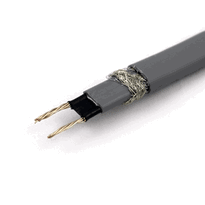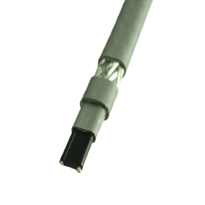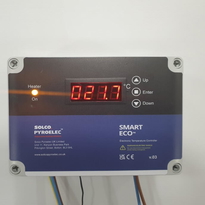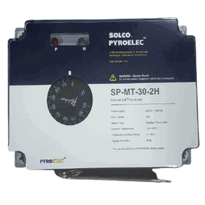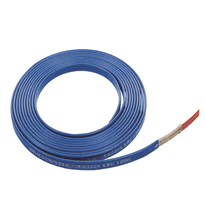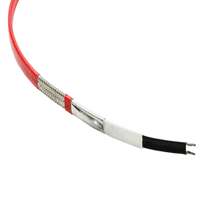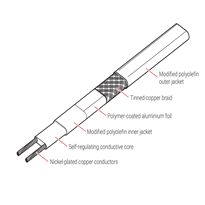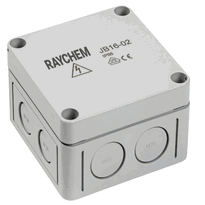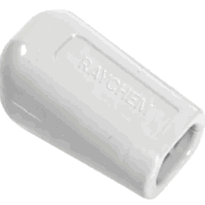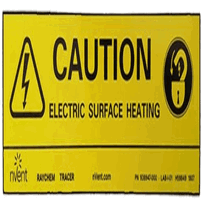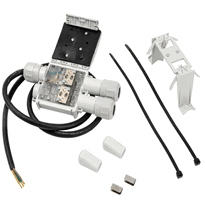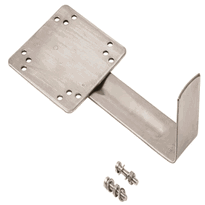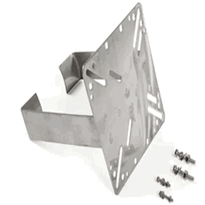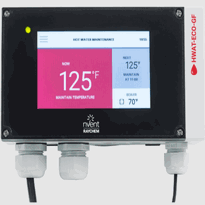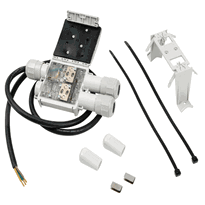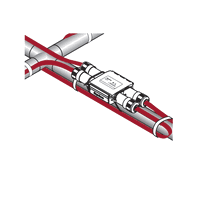Heat Trace Pex
Heat trace systems for PEX pipes are specifically designed to prevent freezing and regulate temperature, particularly in outdoor or unheated indoor environments. Self-regulating heat trace offers energy-efficient operation alongside safety features such as overheat protection, making it suitable for various pipe materials, including PEX.
Proper installation is essential for optimal performance. This involves secure, gap-controlled wrapping to ensure even heat distribution; thorough surface cleaning to promote good adhesion; and the secure attachment of thermostats for reliable temperature control. Adhering to these steps helps maintain system effectiveness.
Safety considerations are paramount. Compliance with electrical standards and correct circuit protection are vital to prevent hazards. Regular inspection and maintenance can identify potential issues early, extending the lifespan of the system and ensuring continued reliable performance.
Heat trace systems are an excellent solution for applications such as potable water lines and radiant heating, providing peace of mind during cold weather. Maintaining adherence to best practice guidelines will optimize system functionality and safety, ensuring the longevity and reliability of your heat trace installation.
Types of Heat Trace for PEX Pipe
Understanding the different types of heat trace systems available is essential for selecting an appropriate solution for PEX piping applications, especially in environments prone to extreme or fluctuating temperatures.
Self-regulating heat trace adjusts its output based on the surrounding temperatures, increasing heat output as conditions become colder. This makes it energy-efficient and safe for use on PEX, PVC, and other non-metallic pipes. These systems feature built-in safety features such as overheat protection, which helps to reduce fire risks and ensure reliable operation. Their ability to adapt to varying conditions helps to conserve energy and provides more precise temperature control for the pipes. Additionally, self-regulating systems are known for their flexibility, making them suitable for complex pipe routes and irregular shapes.
In contrast, constant-wattage heat trace delivers a fixed amount of heat regardless of ambient conditions. It's suitable for long pipe runs or consistently cold environments but tends to consume more energy than self-regulating systems.
Both types of heat trace come in various voltage options, including standard 120V, 240V, and lower DC voltages. This range allows for customization based on project requirements and safety considerations, ensuring optimal performance and compliance with UK safety standards.
Choosing the right heat trace system depends on the specific needs of your application, the operating environment, and energy efficiency goals. Proper selection and installation will help maintain the integrity of PEX piping and prevent issues caused by cold weather conditions.
Proper Installation Practices for Heat Tape on PEX
Proper installation of heat tape on PEX pipes requires careful preparation and adherence to specific procedures to ensure safety, efficiency, and long-term reliability.
First, inspectors should verify that the pipes are free of leaks, as leaks pose hazards and can compromise the heat tape's effectiveness. The pipe surface must then be thoroughly cleaned to remove dirt, moisture, or oils, promoting proper adhesion and thermal contact. Since PEX is generally resistant to freezing, proper insulation and installation practices are still essential to prevent potential damage. When recommended, aluminium foil tape should be applied between the heat tape and PEX to improve heat conduction and dissipation. Proper adhesion methods are vital to ensure the heat tape stays securely in place and functions correctly over time.
The heat tape should be wrapped along the length of the pipe with no more than a 15-centimeter spacing gap to ensure even heat distribution. Secure the tape every 15 centimeters, avoid overlapping more than 90 centimeters to prevent overheating, and position thermostats directly on the pipe surface for accurate temperature control.
Safety and Electrical Requirements for Heat Trace Systems
Since heat trace systems involve electrical components in close proximity to piping and potentially damp environments, compliance with electrical safety standards is crucial to prevent hazards and ensure system reliability. Proper adherence to these regulations involves several key steps.
1. Heat trace systems must adhere to the requirements of the relevant UK wiring regulations, ensuring that equipment is tested and certified by recognized bodies such as UL or other recognized test laboratories, especially when used with plastic piping such as PEX. This certification guarantees that the systems meet safety and performance standards.
2. Ground-fault circuit interrupters (GFCIs) or residual current devices (RCDs) are mandatory in damp or wet locations. Their use significantly reduces the risk of electrical shock by swiftly disconnecting power in the event of leakage currents.
3. Circuits should be protected with overcurrent devices that are appropriately rated according to the manufacturer's specifications. Proper sizing prevents overloads, thereby reducing the risk of electrical faults and potential fire hazards. Additionally, following electrical safety standards ensures comprehensive protection against electrical failures.
4. Insulation, correct wiring methods, and robust physical protection are essential to prevent electrical faults, environmental damage, and mechanical harm.
Proper installation and maintenance are also critical in ensuring ongoing compliance and safety. Proper installation practices and regular inspections help maintain system integrity and safety over time.
Careful installation and regular inspection of these elements help maintain safety, system integrity, and optimal performance.
Adhering strictly to these safety and electrical standards ensures that heat trace systems operate efficiently while safeguarding personnel and property.
Applications and Benefits of Heat Trace for PEX Pipes
Heat trace systems play a vital role in safeguarding PEX pipes from damage caused by freezing temperatures, particularly in outdoor or unheated indoor settings. They work by wrapping around or running alongside pipes to maintain an even temperature, preventing the water within from freezing and expanding. This helps to avoid pipe bursts and ensures the integrity of the plumbing system in cold weather conditions. Heat tapes are available in various lengths and styles, making them adaptable for different pipe configurations. Additionally, proper installation and insulation materials significantly enhance the effectiveness of heat trace systems, further protecting pipes from cold-related damage. Furthermore, heat trace enhances energy efficiency by reducing heat loss from PEX pipes. Due to their lower thermal conductivity compared to metals, PEX pipes naturally minimize heat transfer. When combined with heat trace systems, they further decrease the amount of energy required to keep water flowing smoothly. This results in lower energy consumption and operational costs. These systems are compatible with a wide range of PEX applications, including potable water supply lines, radiant floor heating systems, and general supply pipes. By providing reliable protection against freezing, heat trace systems contribute to extending the lifespan of PEX pipes. They also help reduce the risk of costly repairs and operational downtime in both residential and commercial properties across the UK.
Maintenance and Operational Tips for Long-Term Performance
Regular inspection and diligent maintenance of heat trace systems are essential to ensure their long-term performance and safety when used with PEX pipes. To maintain system integrity, consider the following steps: 1. Conduct inspections at the start of each heating season and on a monthly basis during use, focusing on physical damage caused by animals, debris, or environmental factors. 2. Replace any heat tape showing cuts, cracks, charring, or signs of moisture ingress immediately to prevent failure. 3. Apply aluminium foil tape over plastic pipes when installing heat tape to improve heat transfer and minimize potential damage, ensuring it's securely attached. 4. Turn off or disconnect heat tape during warmer months or when ambient temperatures are above 10°C, and store it appropriately during the off-season to extend its lifespan. Proper insulation and protection further enhance system longevity by preventing weather-related damage and condensation issues. Adhering to these practices will help ensure reliable and safe operation over time.
Conclusion
Proper selection, installation, and maintenance of heat trace systems for PEX pipes are vital for ensuring reliable frost protection and efficient operation. Adhering to safety standards and electrical requirements helps to minimise risks and extend the lifespan of the system. Understanding application-specific benefits allows for informed decisions that enhance performance and energy efficiency. By following detailed procedures and operational tips, users can achieve long-term durability, safety, and cost-effectiveness when managing PEX piping systems under various environmental conditions.








